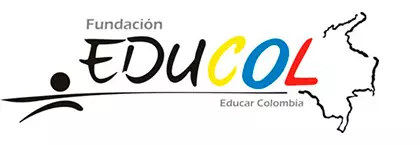Therefore, while OB policy objectives are interconnected and might typically be mutually reinforcing, they might additionally contain significant trade-offs. DeFi methods are proof against censorship because transactions are recorded on a public blockchain. Transactions are visible to everybody, which increases transparency and reduces the potential for fraud. Conversely, traditional financial methods lack this degree of transparency, transactions and accounts could be subject to censorship based mostly on laws or decisions made by authorities. These factors Decentralized application make it more doubtless for participants in traditional financial systems to encounter hidden fees and fraudulent activities. In conventional finance, entities like banks typically keep the ledgers internally.
Ebill: The Secure Method To Problem – And Pay – An Invoice
DeFi platforms are revolutionizing how we access Open Finance VS Decentralized Finance and deliver financial companies by giving consumers larger accessibility, transparency, control, and security. We can anticipate seeing even more avant-garde monetary companies and apps as the DeFi ecosystem develops. In such a scenario, the UK’s top-down standardisation approach has confirmed to be more effective than the European market-led various.
Decentralized Finance Vs Traditional Finance

Therefore, data portability differs from information interoperability because it comes with a one-off transfer at a specified cut-off date. Traditional finance depends on credit https://www.xcritical.in/ checks and in depth documentation to mitigate danger. In DeFi, a few of that risk is held by the account owner because they want to secure their own accounts, or trust one other entity with their funds, and most entities like that do not have the identical protections banks do. Thomas Ankenbrand holds a Master’s diploma from the University of St. Gallen and a PhD from the University of Lausanne.
Tech Facet: Key Crypto Differences Between Defi Vs Cefi
By having sole control of the ledger, the financial institution can change, cancel, or reverse transactions. Banks can also block who can access their financial companies and require users to identify themselves to fulfill KYC tips earlier than allowing the use of their services. In traditional finance, the principle pillar of the system is that you want to belief the corporate you’re doing enterprise with, you must trust the forms that’s in command of your cash and people behind it. The source of belief is public governance, monetary authorities, legal guidelines, licenses for financial institutions. Open Finance describes the change of knowledge and providers between financial institutions (e.g., banks and insurance companies) and third-party suppliers by way of obtainable and revealed interfaces, e.g., Open APIs, whereby the exchange can happen in each directions. On the one hand, this contains opening up financial establishments and parts of their information, which at present typically pertains to account and deposit data in addition to payment transactions, by offering interfaces for trusted exterior third-party providers such as FinTech firms.
- Therefore, the UK regime differs from the EU approach primarily in its technical implementation (Dinçkol, Ozcan, & Zachariadis, 2023).
- DeFi provides users with larger accessibility, transparency, control, and security than the conventional centralized financial system, which is a serious departure from it.
- Besides these benefits, potential dangers have additionally been highlighted, suggesting that relevant trade-offs must be addressed when designing an OB framework.
- Alongside Open Finance, Decentralized Finance (DeFi) has increasingly emerged as a pattern driven by technological advances in Distributed Ledger Technology (DLT).
- In other jurisdictions, OB emerged as a half of information insurance policies, resulting from broader governmental initiatives to create data-sharing frameworks.
Given the concerns on focus and competition in Canada’s banking sector reported by the Department of Finance and the Competition Bureau, the primary rationale of a prospective OB regime is clearly recognized. According to our evaluation, Canadian policymakers should subsequently be inspired from the UK experience but must also introduce a related adjustment by imposing a reciprocal data-sharing obligation on all monetary service providers involved. Specifically, the adoption of a standard API normal with rules and oversight established in legislation, and the promotion of a reciprocal access to in-scope data among participants. Nonetheless, regardless of such a top-down standardisation strategy, participation within the OB (i.e., the AA framework) is voluntary. This is as a end result of, not like in different jurisdictions, India’s banking sector was aggressive even earlier than the adoption of OB.
However, blockchain networks like EOS, TRON, Polkadot, and Cosmos are building out DeFi platforms of their own. DeFi platforms function with no central authority and make the most of automation, good contracts, collectivization, and crowdfunding to attain economies of scale. Decentralized finance (DeFi), by giving clients extra energy, transparency, and accessibility over their finances, has the potential to fully transform the monetary sector.
Computools is an IT Consulting and Custom Software Development Company that designs options to help companies meet the needs of tomorrow. Our clients characterize a variety of industries, together with retail, finance, healthcare, client service, logistics and more. He has triggered the technical neighborhood to revisit cryptography in hardware and algorithms and, requirements in internet protocols. In the scenario proposed by most proponents of DeFi, as an alternative of using your card, you would use some form of cryptocurrency and circumvent the charges demanded by the credit card company and the financial institution.
Open ledger know-how permits anyone to verify transactions, reducing fraud by way of transparency and automation that would be tough or inconceivable using conventional siloed private systems. There are extra applied sciences being created that enable for this kind of verification to occur while leaving privateness intact. Even though operating a global blockchain community uses significant electricity, it nonetheless makes use of a lot much less vitality than bodily currencies, bank branches, armored fleets, wire transfers, and the remainder of the world’s banking system.
Therefore, OB was not made mandatory as major gamers had already adopted it independently. For instance, DBS Bank created the most important API developer platform (DBS Bank, 2017). Nonetheless, although the participation is voluntary, the MAS fosters a conducive setting for a clean transition to an open-architecture banking sector. This is achieved by publishing non-binding API requirements and providing enabling infrastructure through SGFinDex, which ensures privateness by design with encrypted consumer monetary data that SGFinDex can’t read or store. These mechanisms helped MAS deliver together numerous players to build the required ecosystem (Kwan Chow & Fan Pei, 2019). Against the overview of OB’s major rationales, this Section explores if and the way these rationales have influenced policymakers’ selections relating to the implementation of the OB regime of their respective jurisdictions.

While open finance focuses on open entry to financial data and companies, Embedded Finance includes integrating financial services into non-financial platforms. Open finance emphasizes knowledge sharing and collaboration, whereas Embedded Finance aims to make financial providers an integral a part of numerous industries, offering seamless transactions within existing platforms. In contrast, blockchain know-how varieties the basis of DeFi service-based platforms, which transact solely in digital belongings. This quickly increasing ecosystem exists totally on the Ethereum blockchain, with ether (ETH) as the common forex.
Further assist for the UK answer comes from the recent EU proposal to introduce Open Finance (European Commission, 2023b). As OB has been launched in the EU and the UK by the identical legislative initiative (i.e., PSD2), they share both the competitive rationale and the mandatory nature of the data-sharing obligation. Indeed, as opposed to the top-down solution adopted in the UK, the EU has avoided publicly mandating API standardisation, allowing banks to create their own data-sharing interfaces or participate in privately-led standardisation initiatives. This decision was primarily based on the priority that a typical API commonplace could hinder innovation and dynamic competition between standards.

However, from the outset, concerns relating to Australia’s banking sector extended past the market energy of the banks to incorporate issues such as poor monetary advice, the maladministration of life insurance claims, and market manipulation (Australian Parliament, 2016, p. 2). The initial report on OB emphasised that information sharing was introduced particularly to empower customers by enhancing worth transparency (Australian Parliament, 2016, p. 39). Similarly, the ultimate report underscored the significance of giving consumers greater control over their information, resulting in increased choice and convenience (Australian Parliament, 2017). Accordingly, within the broader framework for reviewing the banking sector, the OB coverage was explicitly designed to be “customer-focused” and to “be seen from the customer’s perspective” (Australian Parliament, 2017, p. 5). Open finance is defined as a data-sharing model allowing customers to securely entry, share and manage their personal financial account knowledge with select monetary service providers. Financial services may include FinTech firms, banks, and credit score unions, which get controlled knowledge of consumers as per their want.
Traditional finance (TradFi) is a system based on a centralized authority that is in charge of all money prospects give to it. Traditional finance is represented by way of a number of financial establishments like business banks, funding banks, brokerage corporations, and insurance firms which are primarily middlemen between you and your cash. These establishments act as third parties that facilitate cash motion and every of them expenses you a commission payment for their providers.
Recently, a new form of financial intermediation that features independently of centralized intermediaries has emerged, specifically decentralized finance (DeFi). DeFi relies on public, permissionless blockchains and uses so-called good contracts to perform financial providers similar to borrowing, lending, and trading in a clear and automated style. This paper provides an outline of DeFi and discusses its advantages and disadvantages in comparison with CeFi. In it, we analyze totally different scenarios pertaining to the lengthy run paths of CeFi and DeFi, and conclude that a convergence scenario is the more than likely. Within the blockchain ecosystem, a fast-expanding trade known as decentralized finance (DeFi) aspires to revolutionize the present monetary sector.
